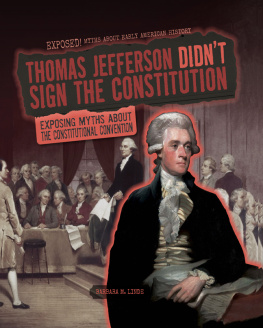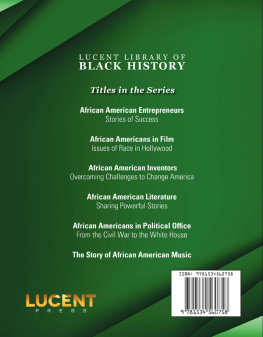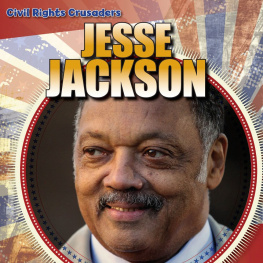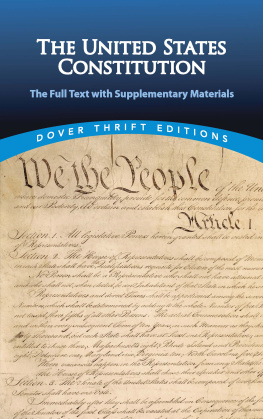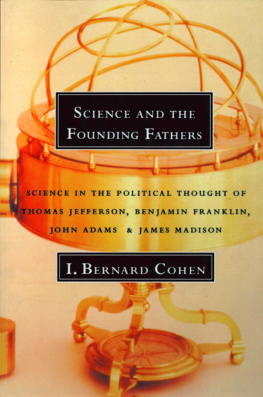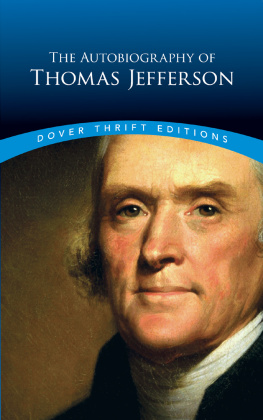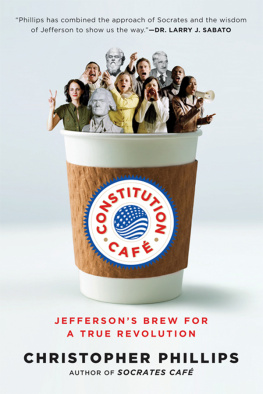
Please visit our website, www.garethstevens.com. For a free color catalog of all our high-quality books, call toll free 1-800-542-2595 or fax 1-877-542-2596.
Cataloging-in-Publication Data
Names: Linde, Barbara M.
Title: Thomas Jefferson didnt sign the Constitution : exposing myths about the Constitutional Convention/ Barbara M. Linde.
Description: New York : Gareth Stevens Publishing, 2017. | Series: Exposed! myths about early American history | Includes index.
Identifiers: ISBN 9781482457353 (pbk.) | ISBN 9781482457377 (library bound) | ISBN 9781482457360 (6 pack)
Subjects: LCSH: United States. Constitution--Juvenile literature. | Constitutional history--Juvenile literature. | United States. Constitutional Convention, 1787--Juvenile literature.
Classification: LCC KF4550.Z9 L56 2017 | DDC 342.73029--dc23
First Edition
Published in 2017 by
Gareth Stevens Publishing
111 East 14th Street, Suite 349
New York, NY 10003
Copyright 2017 Gareth Stevens Publishing
Designer: Sarah Liddell
Editor: Therese Shea
Photo credits: Cover, p. 1 (background image) Superstock/Getty Images; cover, pp. 1 (Thomas Jefferson), 23 (James Madison) GraphicaArtis/Contributor/Archive Photos/Getty Images; background texture used throughout IS MODE/Shutterstock.com; ripped newspaper used throughout STILLFX/Shutterstock.com; photo corners used throughout Carolyn Franks/Shutterstock.com; pp. 5, 15 Visions of America/Contributor/ Universal Images Group/Getty Images; p. 7 Forgottendelights/Wikimedia Commons; p. 9 (Washington) Dcoetzee/Wikimedia Commons; p. 9 (voting record) Denniss/Wikimedia Commons; p. 11 Bettman/ Contributor/Bettman/Getty Images; p. 13 Stock Montage/Contributor/Archive Photos/Getty Images;
p. 17 (15th Amendment) Keeleysam/Wikimedia Commons; p. 17 (main) JEWEL SAMAD/Staff/AFP/ Getty Images; p. 19 (both), 23 (top) photos courtesy of National Archives; p. 21 Joseph Sohm/ Shutterstock.com; p. 25 (Jonathan Dayton) File Upload Bot (Magnis Manske)/Wikimedia Commons;
p. 25 (Constitution signatures) Drdpw/Wikimedia Commons; p. 27 (John Jay) Scewing/Wikimedia Commons;
p. 27 (James Madison) Botaurus/Wikimedia Commons; p. 27 (Alexander Hamilton) Hohum/
Wikimedia Commons; p. 27 (Patrick Henry) Complex01/Wikimedia Commons; p. 27 (James Monroe) Maximilian Schnherr/Wikimedia Commons; p. 27 (Sam Adams) Harpsichord246/Wikimedia Commons;
p. 29 MarshalN20/WIkimedia Commons.
All rights reserved. No part of this book may be reproduced in any form without permission in writing from the publisher, except by a reviewer.
Printed in the United States of America
CPSIA compliance information: Batch #CW17GS: For further information contact Gareth Stevens, New York, New York at 1-800-542-2595.
CONTENTS
On September 17 of each year, Americans honor Constitution Day. They remember the day in 1787 that a group of state representatives met in Philadelphia, Pennsylvania, to sign the document they had created: the US Constitution.
The Constitution is the document that describes the American government and the basic laws of the country.
Over the years, myths have replaced some of the facts about the Constitutional Convention and the amazing document itself. Lets look at some of them.
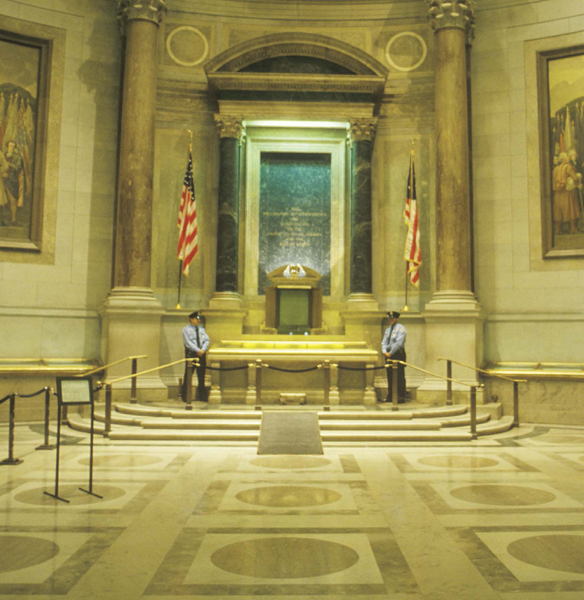
The first four pages of the Constitution are shown at the National Archives in Washington, DC. Theres a fifth page that tells how the Constitution was to become law.
OLD, SHORT, AND POWERFUL
The US Constitution is one of the oldest in the world. Its also the shortest, with just 4,543 words (not including the Bill of Rights and other amendments). Over 100 other countries have used it as a model for their own constitutions.
Before the US Constitution went into effect, the 13 states used a set of laws called the Articles of Confederation. It didnt work well. The national government had little power. So the countrys leaders met in 1787 to fix the Articles. But they soon realized they needed new laws and a stronger federal, or central, government.
They worked from May to September, through the hot summer. They kept the Pennsylvania State House windows and doors shut for secrecy. After a lot of arguing, the Framers had created a new government.
THE FRAMERS
We call the men at the convention the Framers because they framed, or constructed, the Constitution. In notes and letters, the Framers talked of the terrible summer heat. In those days, men wore coats all day, sometimes made of wool.
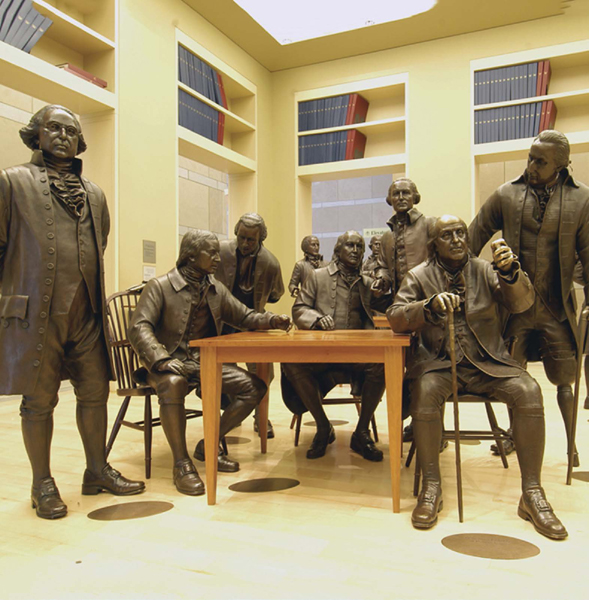
These statues of the Framers are found at the National Constitution Center in Philadelphia, Pennsylvania.
THE MYTH :
REPRESENTATIVES FROM ALL 13 ORIGINAL STATES HELPED WRITE THE US CONSTITUTION.
THE FACTS :
Only 12 of the 13 states sent delegates, or representatives, to the convention. Seventy men were chosen by their states, and 55 attended. The Framers were well-educated white men who owned land and were leaders in their own states.
Rhode Island was the one state that didnt send any delegates to the convention. Most of its people liked being independent. Rhode Islanders feared a stronger federal government would have too much power over their small state.
A MIRACLE?
George Washington wrote that the convention seemed little short of a miracle. He was amazed that so many people with different points of view could come together to successfully create a new national government.
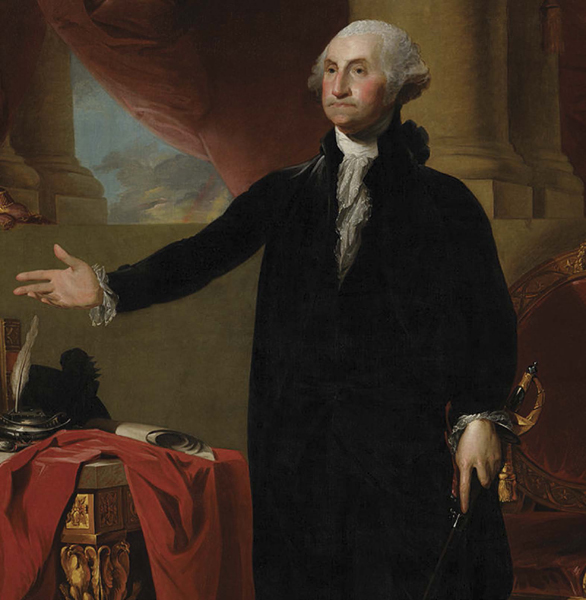
GEORGE WASHINGTON
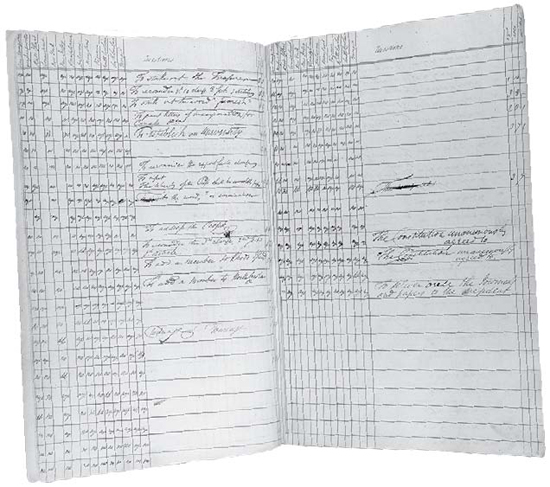
This is the final vote on the Constitution from September 15, 1787. You can see that the column for Rhode Islands votes is empty. The New York column is blank as those delegates left early.
THE MYTH :
ALL THE MEN WHO SIGNED THE DECLARATION OF INDEPENDENCE WERE ALSO AT THE CONSTITUTIONAL CONVENTION.
THE FACTS :
Not quite. Only six of the 56 Founding Fathers signed both documents. They were Benjamin Franklin, George Clymer, Robert Morris, George Read, Roger Sherman, and James Wilson.
John Adams was acting as US ambassador to Great Britain, so he couldnt sign. Massachusetts representative Caleb Strong went home when he disagreed with some of the decisions. Samuel Adams and John Hancock didnt attend the convention because they, too, worried a powerful new federal government would take away states rights.
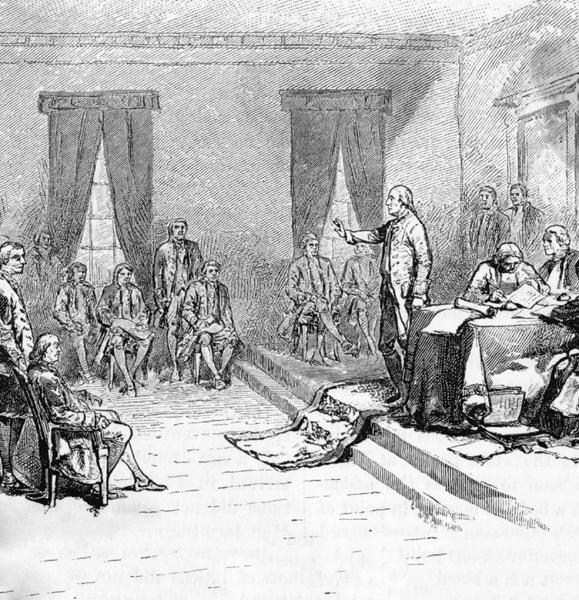
In this engraving, George Washington, president of the convention, is standing. Benjamin Franklin is sitting in the front row, and some of the other Framers are writing.
BUSY BEN
Benjamin Franklin signed many important US documents. He signed the Declaration of Independence in 1776. In 1783, he signed the Treaty of Paris that ended the American Revolution. He also signed the US Constitution.
THE MYTH :
THOMAS JEFFERSON ATTENDED THE CONVENTION AND SIGNED THE CONSTITUTION.
Next page
